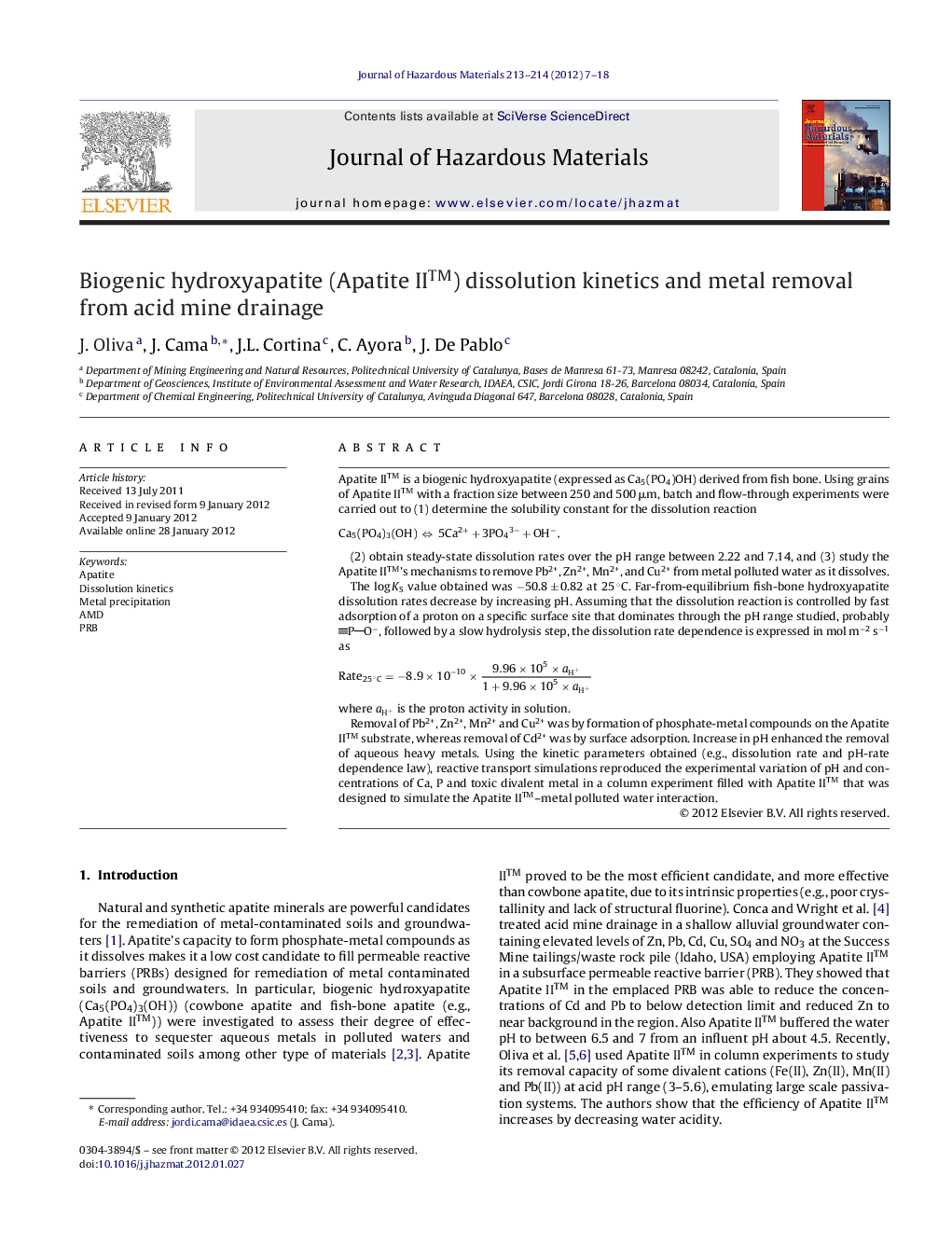| Article ID | Journal | Published Year | Pages | File Type |
|---|---|---|---|---|
| 578277 | Journal of Hazardous Materials | 2012 | 12 Pages |
Abstract
Removal of Pb2+, Zn2+, Mn2+ and Cu2+ was by formation of phosphate-metal compounds on the Apatite II⢠substrate, whereas removal of Cd2+ was by surface adsorption. Increase in pH enhanced the removal of aqueous heavy metals. Using the kinetic parameters obtained (e.g., dissolution rate and pH-rate dependence law), reactive transport simulations reproduced the experimental variation of pH and concentrations of Ca, P and toxic divalent metal in a column experiment filled with Apatite II⢠that was designed to simulate the Apatite IIâ¢-metal polluted water interaction.
Related Topics
Physical Sciences and Engineering
Chemical Engineering
Chemical Health and Safety
Authors
J. Oliva, J. Cama, J.L. Cortina, C. Ayora, J. De Pablo,
